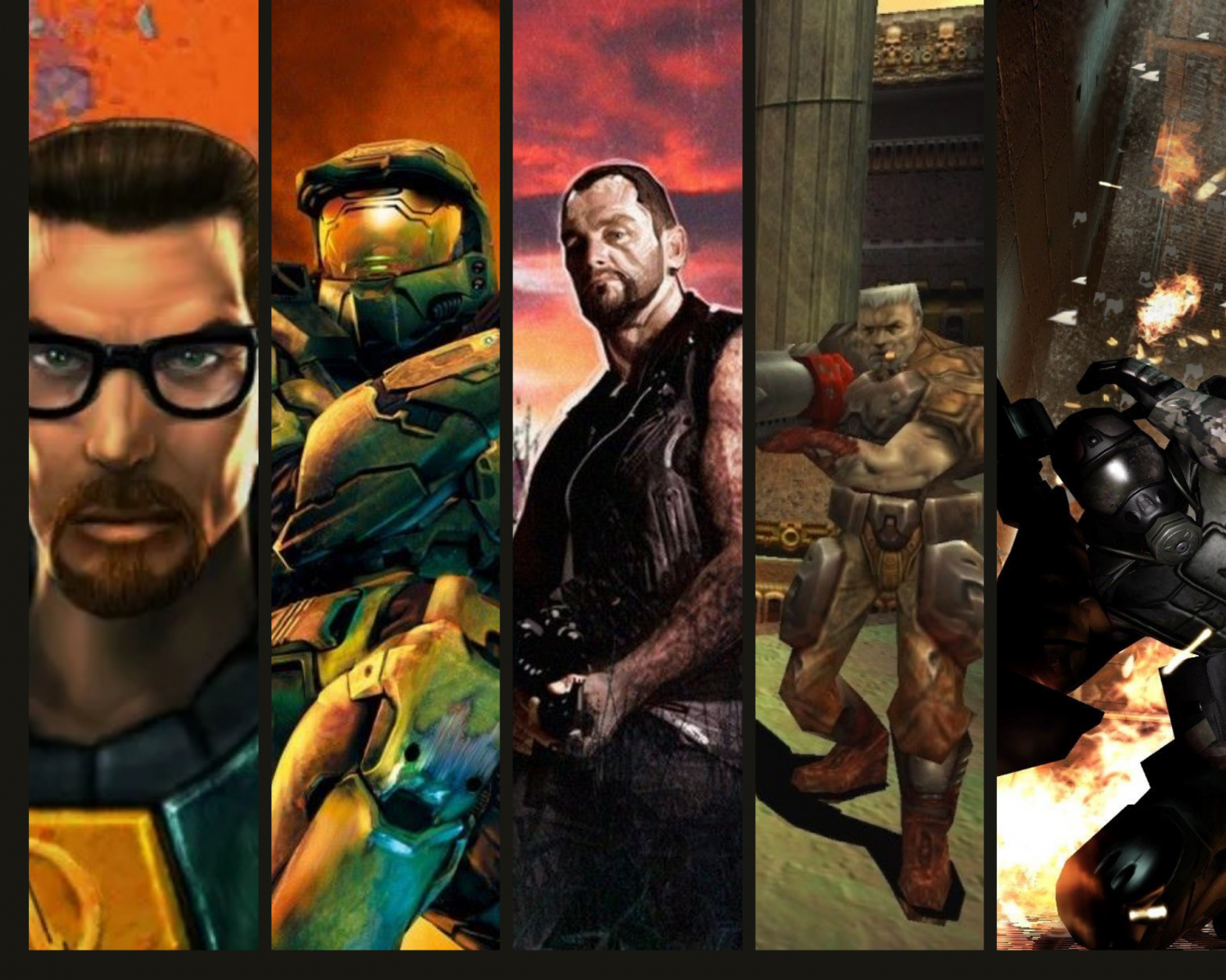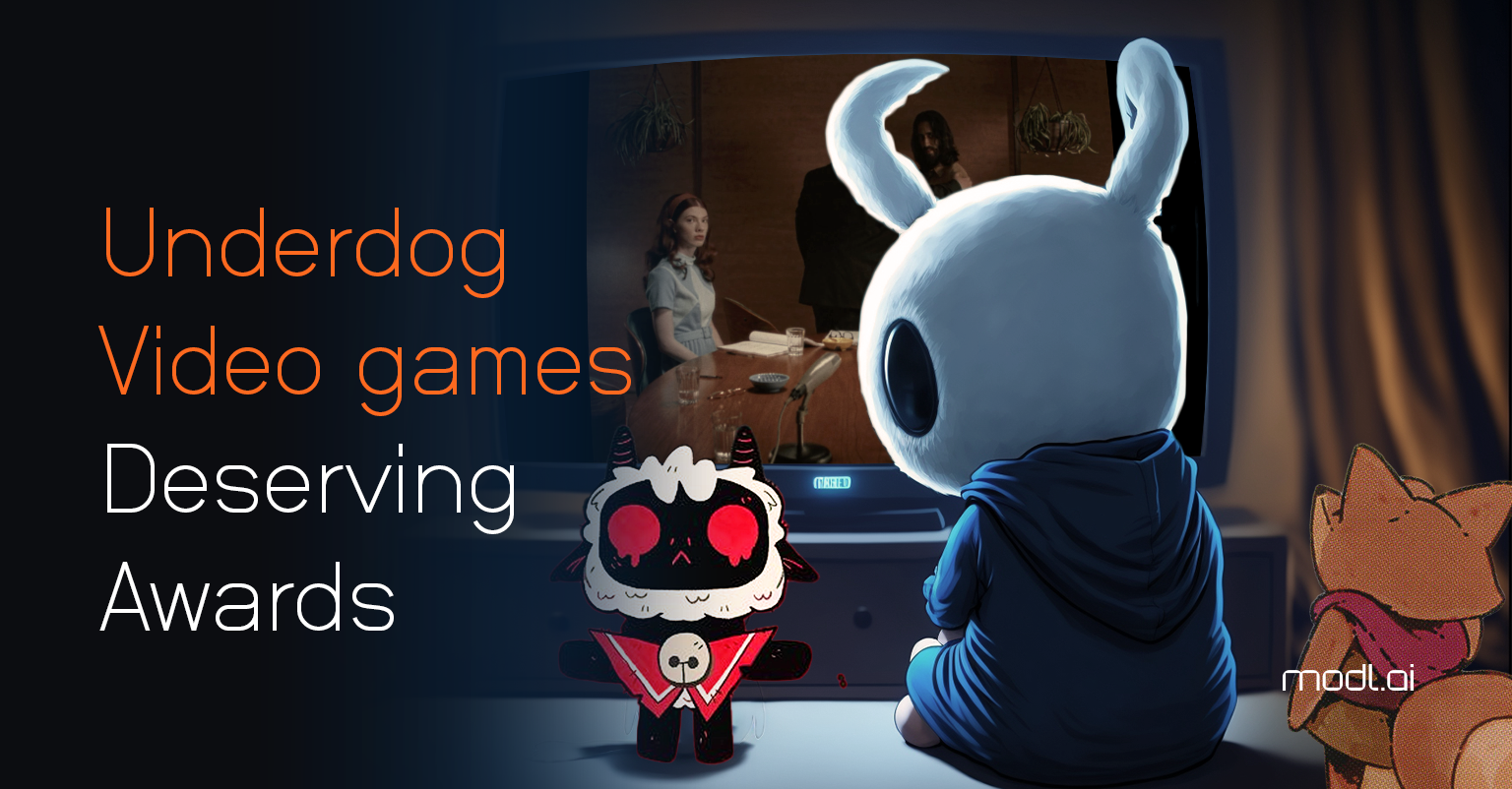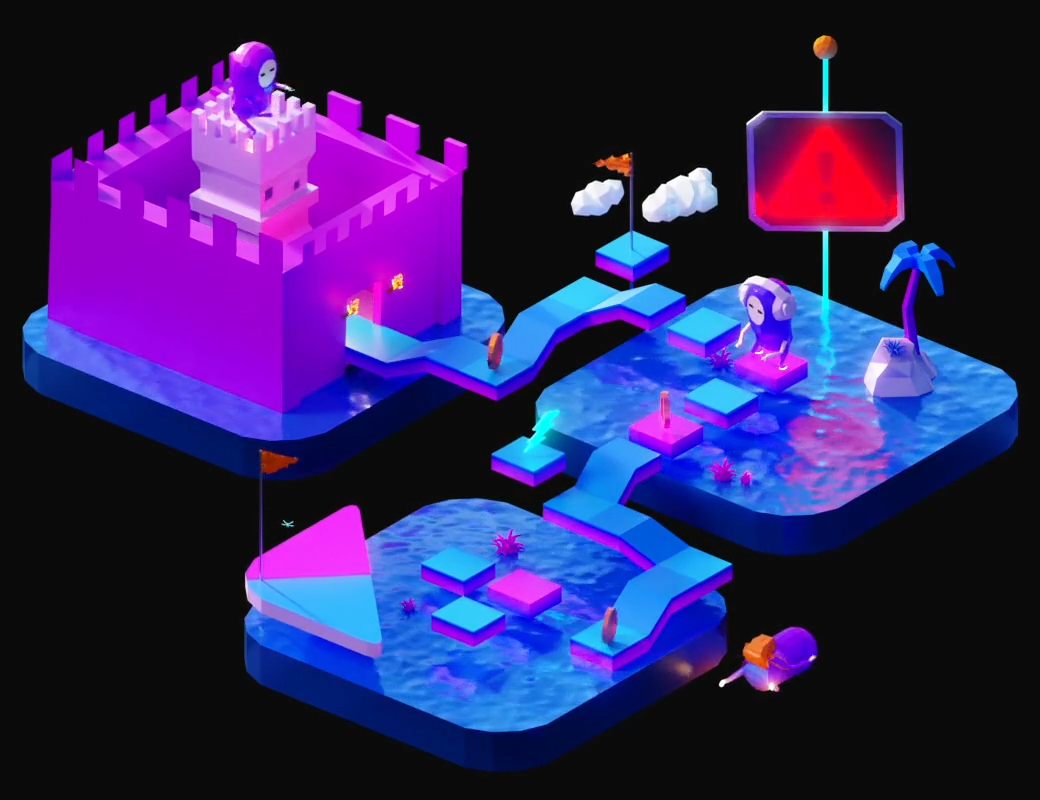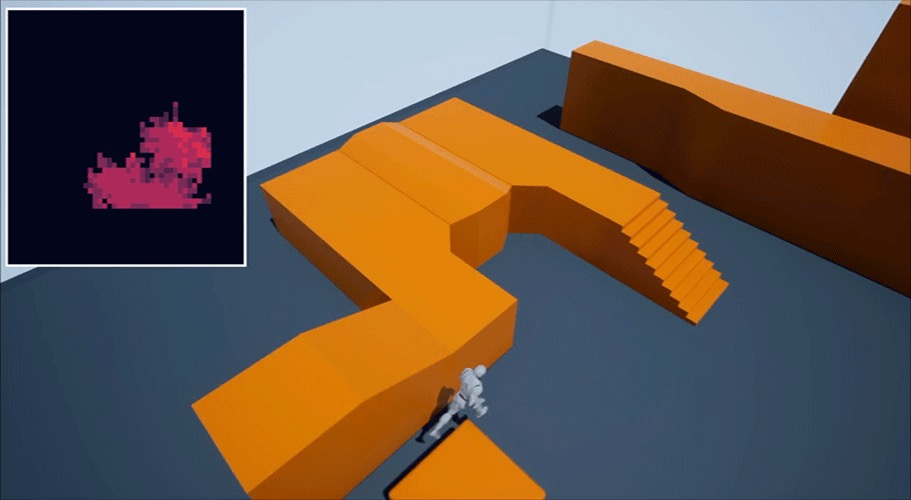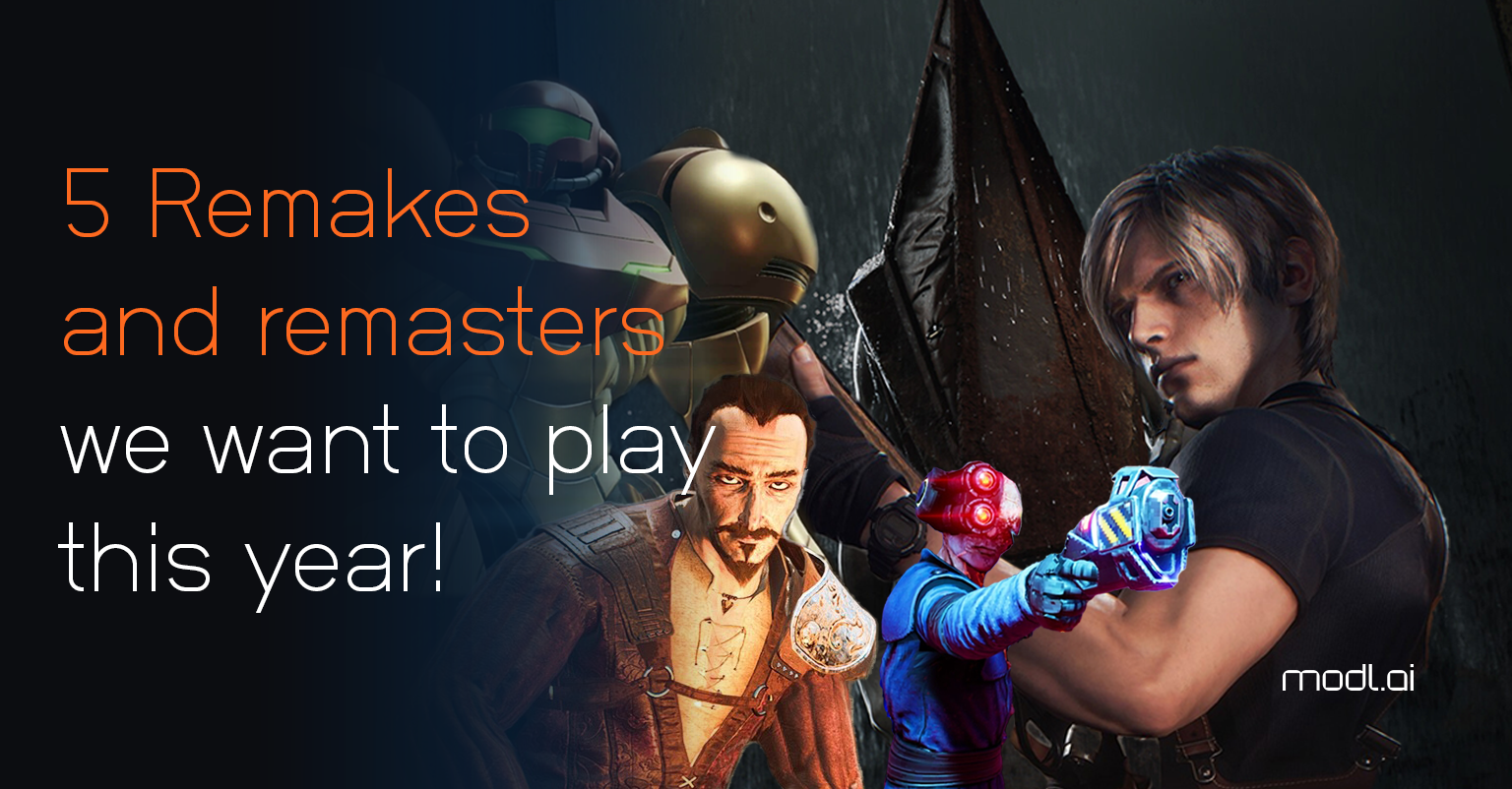If you’ve spent anytime playing videogames, you’re bound to come across first-person shooters, with everything from DOOM to Overwatch, Battlefield, and PUBG having a big impact on the types of games we play and how we play them together. Given their popularity and continued development, they have subsequently proven influential in the development of artificial intelligence for games.
Some of these innovations are built to create fun and challenging opponents for you to fight against, while others enhance the overall experience and increase the immersion as you’re caught in the middle of a heated gunfight.
So let’s take a look at five first-person shooters that changed the face of the industry courtesy of their AI techniques.
Quake III: Arena
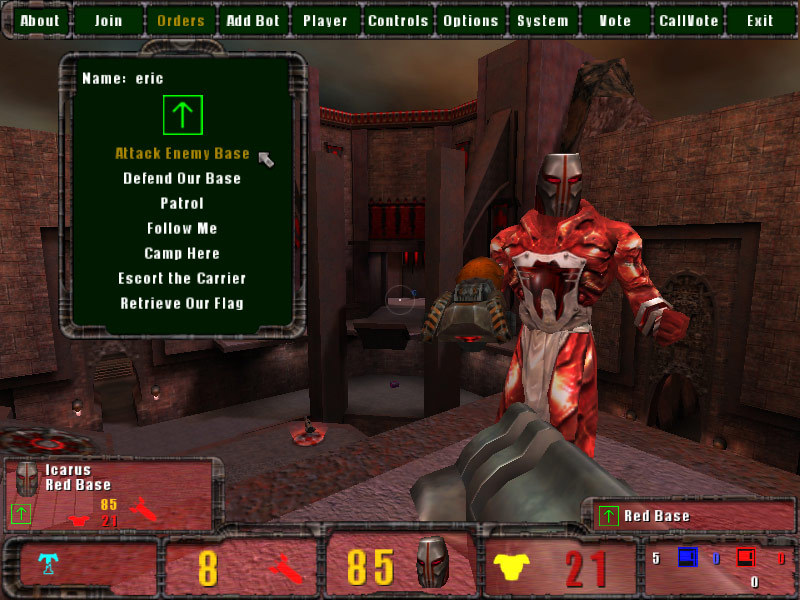
In the late 1990s, the PC gaming market was stuffed with first person shooters. id Software’s DOOM back in 1993 defined the genre, and with it came many imitations and innovations such as Hexen and Duke Nukem 3D. But with the push in 3D graphics cards, new titles were carving out exciting new worlds and interesting new characters – largely for you to shoot them. 1998’s Unreal by Epic Games helped introduce rich 3D worlds for players to explore. Meanwhile, 1999’s Unreal Tournament was part of a movement in redefining the standard for online multiplayer that is now commonplace. But it was id Software’s successor to DOOM that really drove AI innovation.
The Quake franchise started out in 1996: an attempt to carve out new territory after the success of the DOOM, with players travelling between dimensions fighting off monstrous hordes. But what we’re interested wasn’t until 1999’s Quake III Arena: a multiplayer-focused entry of the series, that competed directly with Unreal Tournament. While the aim is to have players jump online to fight off opponents, you can also play against a myriad of simple AI bots, but the real challenge is ensuring they know how to move around the combat arena quickly and effectively. To achieve this, Quake uses an ‘area awareness system’ (AAS), which computes areas they can cross, and how best to navigate through them using both pre-baked information at design time, alongside what’s happening at the moment. It effectively becomes a filter through which a bot can make decisions on where to go and how to achieve it. This was a big step forward at the time, given most AI bots would use simple waypoint graphs, which lacked the same kind of detail and seldom responded to change in the world.
The AAS system of Quake III is essentially a precursor to what we now refer to as a ‘navigation mesh’. A tool that exists in modern game engines such as Unity and Unreal that allows us to compute navigation data for AI characters in-game worlds.
Half-Life
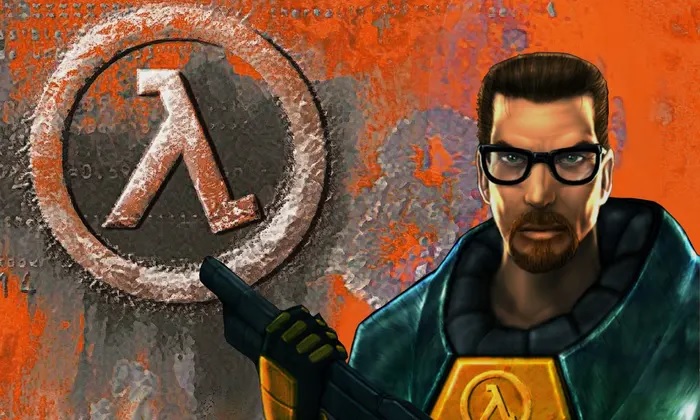
While Unreal and Quake were fighting it out to be king of the online shooter, there was another FPS by a then unknown studio that would go on to redefine the industry.
Valve published their first game, Half-Life in 1998: a story-driven FPS that told the story of Dr. Gordon Freeman, a theoretical physicist whose research accidentally creates a portal to another dimension. As chaos breaks out across the Black Mesa research facility, players must help Freeman escape with his fellow scientists, all the while evading not just the hostile aliens coming through the breach, but the military forces who seek to cover up the incident and get rid of all survivors.
Inspired by 1997’s Goldeneye 007 for the Nintendo 64, Half-Life’s approach was to create characters that lived and breathed their lives outside of the player’s involvement. To pull this off, characters in Half-Life use a simple technique known as Finite State Machines (FSM), where characters are designed to operate in distinct states (e.g. idle, chasing the player, attacking enemies), and logic is provided for them to transition between those states based on what’s happening around them. So if a character is idle and it spots an enemy, it then goes into an attacking state.
This is used not just to create engaging enemies that go into cover or try to put pressure on the player. But also so they can perform in other situations, be it working alongside the player, running away from things happening around them, and adding to the intensity and realism of the story as chaos beings to unfold.
If you fancy learning more about the underlying code, check out the AI 101 episode on Half-Life and Finite State Machines on the AI and Games YouTube channel.
F.E.A.R.
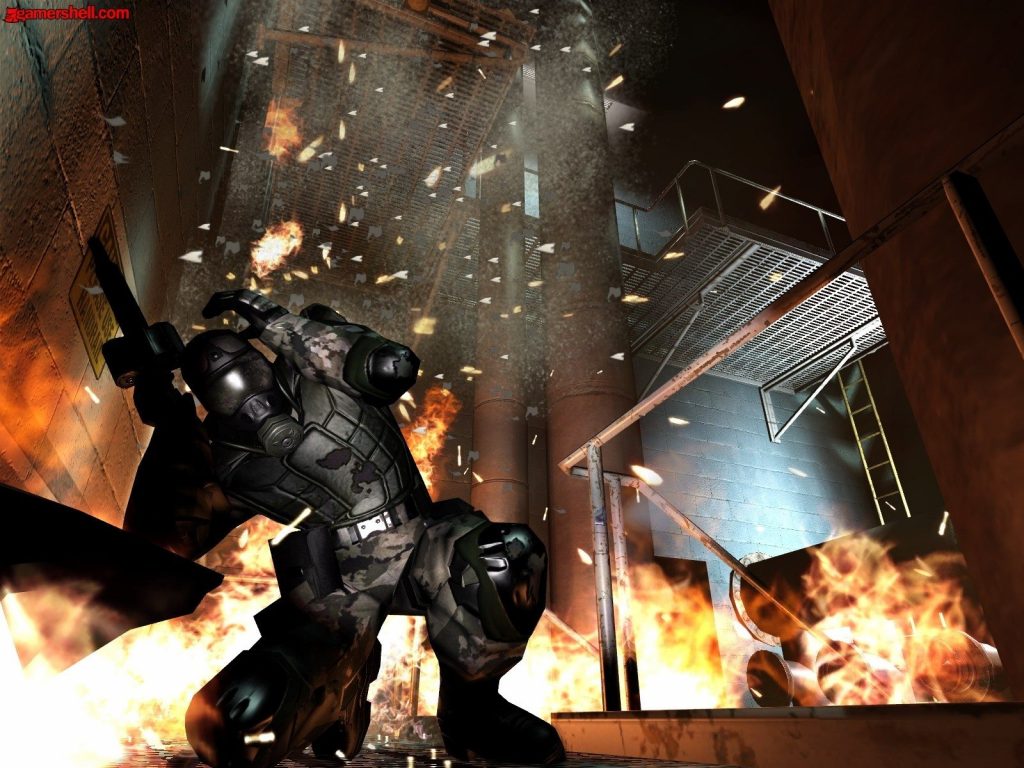
The early 2000s brought on a new era of First-Person Shooter in the heyday of Half-Life, leading to the creation of new franchises that would prove to be mainstays of the games industry, such as Far Cry, Call of Duty, and Halo. But in amongst them all came F.E.A.R., or First Encounter Assault Recon. Developed by Monolith Productions, now largely famous for the Lords of the Rings spin-off ‘Shadow of Mordor’, the studio sought to try something a little different after the success of their 60’s-infused spy shooter ‘No One Lives Forever’.
As the name would suggest, F.E.A.R. takes on a more sinister tone, as ‘The Point Man’, players fight off waves of psychically controlled soldiers in dimly lit docklands and office buildings. All the while experiencing hallucinations and visions of a creepy little girl that destroys everything in her path.
However, while Alma – said creepy girl – is the marketing focus of the FEAR games, it’s the enemy soldiers that made a real impression. Monolith moved away from the pure finite state machine approach they had used previously, but instead, it’s now a hybrid of FSMs but also, another AI technique known as automated planning.
Inspired by techniques first devised in the late 1970s, FEAR adopts automated planning: a technique where you map out the high-level goals a character might want to accomplish, and then design actions that help it achieve those goals. A planner then strings sequences of useful actions together into – wait for it – a plan! This led to what is known as the Goal Oriented Action Planner (or GOAP, they clearly loved their acronyms), which would devise a goal for a character (such as rushing into cover, knocking over a table, or laying down suppressing fire) and then translated the plan actions into specific behaviours for the finite state machine to execute.
GOAP had a huge impact on video games in the coming years, with games such as Tomb Raider and Deus Ex adopting this technique for their own enemy AI. Meanwhile, the ongoing adoption of GOAP led to different versions of AI planning appearing in other games. With modern franchises such as Horizon Zero Dawn and Dying Light embracing Hierarchical Task Network (HTN) planning, a similar approach that creates macros of good actions that can be used in sequence. And to this day, F.E.A.R. is still heralded as one of the greatest shooters of all time, and one of the best examples of AI characters in videogames.
We recently explored the AI of FEAR in our History of AI series on the modl.ai YouTube channel, so check that out to learn more about the game.
Halo 2
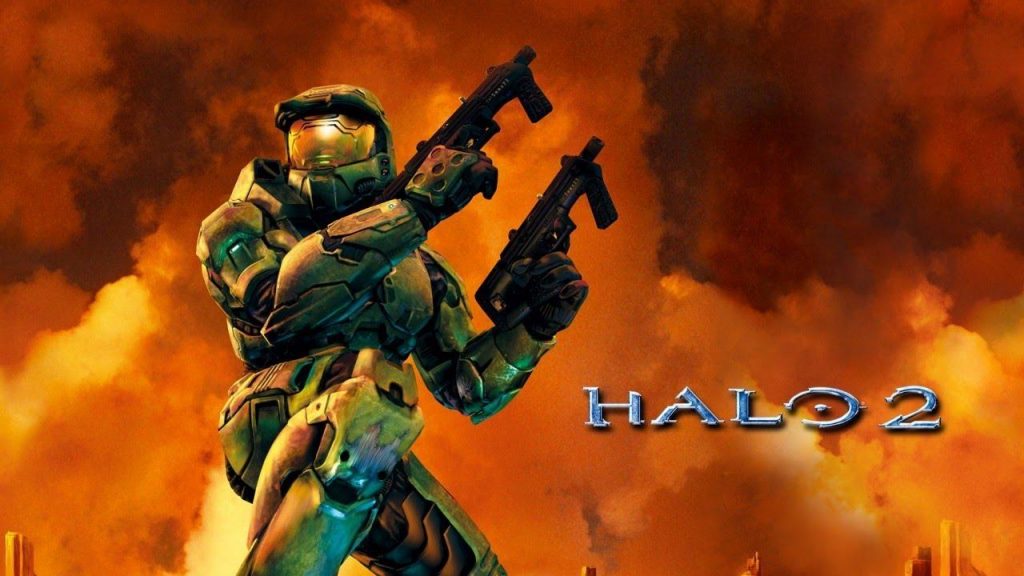
The merry space adventures of the Master Chief have become a staple of the entertainment space for over 20 years, with video games, books, graphic novels, animation, and more recently the TV series on Paramount+. While fans of the series may argue over which entry is their favourite, the most important release – as far as we’re concerned – is 2004’s Halo 2.
Halo introduced a complicated design problem for enemy AI characters: with a myriad of archetypes ranging from Grunts to Jackals, Elites, and Brutes, to the myriad of combat scenarios players may face them in. Be it in a forward operating base, closed-off Forerunner temples, or racing across the Halo itself in-ground or aerial vehicles.
The original Halo adopted an approach similar to but slightly different from Half-Life, and with Halo 2 they fleshed it out, even more, to become what we know collectively know as ‘Behaviour Trees’. As the name implies, the behaviour of a character is structured less like a state machine, with all the state connections creating a web of possible paths that can occur, but instead, as a tree shape where everything begins at the root and is based on key decisions or information about the game state, it will traverse down a path that ultimately leads to a specific set of actions. This is really useful not just to allow for specific action sequences to be designed, but it’s great because you can quickly determine what actions are not important for the character. So when Master Chief is barreling towards an enemy in a Warthog jeep or Scorpion tank, the NPCs know they need only focus on the ‘vehicular combat’ portion of their behaviour tree. Plus another big innovation was, as Bungie called it, ‘Stimulus Behaviours’: a process whereby the tree could be interrupted in order to force a hard change in behaviour. A great example of this is the Grunts who begin to panic when the more advanced Elites are taken out by the player.
Halo would continue to iterate on its own tools for AI characters, but the impact of Behaviour Trees cannot be understated. Nowadays, they’re used to controlling non-player character AI in the vast majority of AAA releases. Not to mention it is the default AI toolset in game development tools such as Unreal Engine and CryEngine.
Check out our own episode of the History of AI series, in which we talk about both Half-Life and Halo 2 in a bumper double-bill episode!
Call of Duty 2
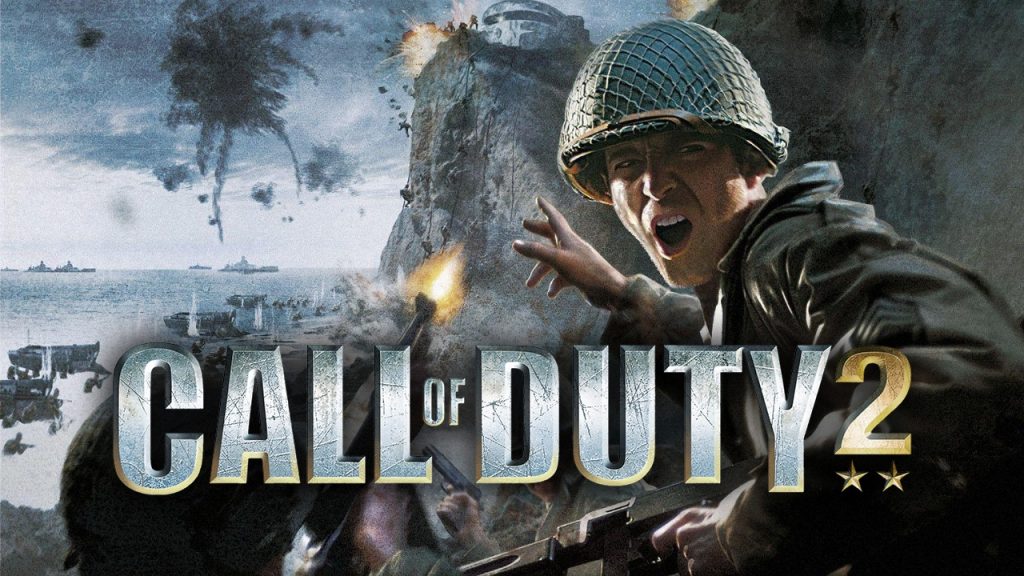
In amongst the technical innovations of Halo and F.E.A.R. is arguably the biggest first-person shooter franchise of the 21st century: Call of Duty. A series of military shooters that has somehow released 46 games (of only 19 are in the ‘main’ series) since the first installment back in 2003. But the reason why Call of Duty is on this list might not be immediately obvious. The franchise has players travel around the world and get caught in all sorts of intense combat encounters, many of which are inspired by real theatres of conflict. The enemies you encounter seldom stand out from one another and their AI is functional if not necessarily interesting, but it’s actually your allies and how they support you that makes this series relevant.
Call of Duty 2, developed by Infinity Ward and released in 2005 is notable in that it’s one of the earliest games to embrace a simple yet effective gameplay technique known as ‘barks’. Barks are small lines of dialogue that a character can utter at specific points in time based on some logic about the current game state. They don’t require a deep tree of possible narrative branches or player input, they just say a line of dialogue out loud when a series of rules and conditions are found to be true.
So if a Nazi soldier is shooting at you with a mounted machine gun, an ally pinned down nearby will tell you what’s happening. They call out positions of enemies relative to where you are when they’re moving out of position, and even for the enemies themselves, they shout to one another to take cover or push forward. There are over 20,000 lines of dialogue in Call of Duty 2, recorded in multiple languages, designed for characters to utter in very specific circumstances. Meaning they not only needed to record all those lines but afterward the logic was encoded for how and why any one particular line was going to be uttered, as well as cooldowns and other logic to ensure your allies didn’t shout at you for the 8th time about that sniper on the first-floor balcony.
You can see (and hear) some of this in action in this clip below.
Left 4 Dead
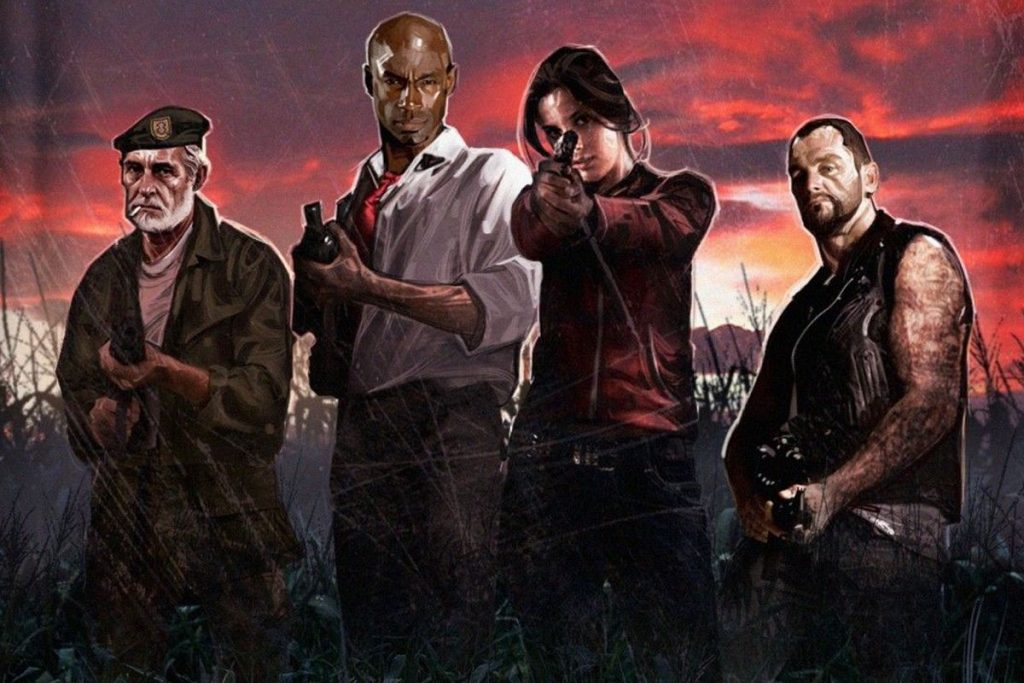
Last but not least, we journey forward in the far-flung past of 2008. As the industry was in the thrall of Call of Duty and Halo, online multiplayer was already feeling a little too repetitive. And while Battle Royales such as PlayerUnknown’s Battlegrounds and Fortnite was many years away, one alternative was to stop fighting faceless soldiers, and instead fight hordes of zombies, many of whom were also faceless, but for much more grotesque reasons.
Valve once again appears on this list courtesy of then-subsidiary Turtle Rock Studios and Left 4 Dead: a 4-player co-operative online multiplayer that forces players to work together as they fight their way through a zombie apocalypse. The game makes its way onto our list because of its groundbreaking ‘Director’ AI. A gameplay system that takes some of the established AI techniques from earlier in this list, and applies them in an entirely different way.
The Director uses a finite state machine, much like the enemy AI in Half-Life (and indeed those in Left 4 Dead as well). But this time around, the actions it can execute don’t control a specific character, but rather they change the pace of the game by spawning zombies, setting targets for them to focus on, and even triggering the more dangerous boss enemies such as the Tank and Witch.
While nowadays the idea of modelling player data and their behaviour is much more established, back in 2008 the approach was really simple. The game models a player’s stress’ based on the damage they’re receiving and how close the zombies are when they’re being killed. So if you’re picking them off from afar, it’s not a big deal. But if you’re getting hurt and smashing through zombies that are right in front of you, that’s going to make you feel a little stressed out.
Left 4 Dead was very much a novelty of its time, but the idea of a Director has been embraced in different ways since then. Most open-world games such as Far Cry and Assassin’s Creed now have a Director of some sort to balance the experience and keep players engaged. Meanwhile, the co-operative shooter concept Left 4 Dead pioneered has returned in full force in recent years, with games such as Warhammer: Vermintide, World War Z, Deep Rock Galactic, GTFO, and Turtle Rock’s own reboot of the concept, Back 4 Blood.
Left 4 Dead was the first episode of our History of AI series on the modl.ai YouTube channel, so if you want to see more of it in action and how it works, check out this video!
Closing
While videogames apply AI in a myriad of cases, it’s important to acknowledge that first-person shooters have been a huge influence on the field. This is largely because of the popularity of the genre and people want intelligent opponents to face off against. But it’s not the only way in which game AI has brought new gameplay experiences. So stick around and we’ll take a look at some of the more (non-violent) ways AI has impacted games over the years.

